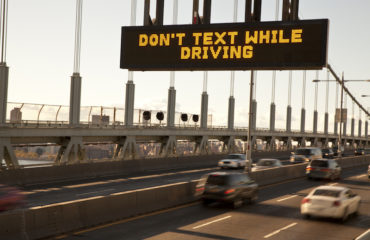Are you a parent of a teen driver or someone involved with teens as they mature and start to drive? Then this article is for you. What follows are three particular efforts designed to assist in steering teens to be safer drivers.
In today’s electronic sharing society it is almost impossible not to hear daily about a teen being killed in a car crash that involved:
- Texting, or
- Speeding, or
- Other passengers, or
- Alcohol, or
- Fatigue.
And the list continues on.
Friends and family mourn the loss and ask Why? Parents suffer intense grief wondering if more could have been done. Having never lost a son or daughter to a traffic crash, I can only imagine the intense pain, and I know that my imagination is not sufficient.
Not So Fast: Parenting Your Teen Through the Dangers of Driving
Traffic crashes are the number one killer of teens ages 14-18 and if that isn’t startling enough, half of the teens killed in crashes are the drivers themselves. In 2011 over half of the teen occupants killed in motor vehicle crashes were not wearing seat belts.[1] Statistic after statistic demonstrates the dangers of teen driving. In his book Not So Fast: Parenting Your Teen Through the Dangers of Driving, Tim Hollister[2] notes that: “For teens, the dangers start at “at risk” and go up from there.”[3] He points to the inexperience of teen drivers as well as a number of other factors that come into play. Mr. Hollister uses both research and his personal experience to provide great information for parents and their role in supervising a teen driver and reducing the risks. Ultimately, it is the parent’s involvement before the teen starts driving, as well as during, which can make a significant difference.[4]
I Know Everything
Another effort to improve teen driving safety is I Know Everything, a program developed for teens and parents to sit down and talk about what they know and remind each other of the importance of safe driving.[5] I Know Everything reminds parents that they have to be good examples when driving, that teens need reminders on what it means to be safe on the road, and that both need to sit down and talk with each other about safe driving.
5 to Drive Teen Safety Campaign by NHTSA
A third program is NHTSA’s newly announced ‘5 to Drive’ Teen Safety Campaign. The ‘5 to Drive’ campaign looks at five critical topics for teen driving safety:
- No cell phone use or texting while driving,
- No extra passengers,
- No speeding,
- No alcohol, and
- No driving or riding without a seat belt.
Using these safety messages, 5 to Drive encourages parents to discuss each subject with their teens. To help parents with the conversation, NHTSA offers “Parents Center” at www.safercar.gov. Here, parents will find information about graduated driver’s license laws, setting ground rules, and being a good role model on safe driving.
Parents Make a Difference
What all three of these efforts have in common is the understanding that a parent’s involvement with his or her teen driver is critical for teen driver safety. [6] It is not enough to believe that a driver’s education course is sufficient or that your teen is always responsible. A parent has to set ground rules, possibly through a Teen Driving Agreement,[7] understand the requirements of a Graduated Driver’s License law – and possibly require more. And, ultimately, be a good role model. A parent has to be an active voice and a participant in a teen’s learning and driving skills. A parent has to sit down and have conversations with a teen, not just once, not just twice, but multiple times, reviewing safe driving tips. As a child grows from infancy to childhood to adolescence, parents are there to protect and support that growth and development. That endeavor cannot stop when the teen is behind the wheel of a car. Being a parent is a full-time job and raising a safe driver is part of that job, a job that will always mean there is more to do. But keep in mind: the rewards that come from raising a safe teen driver who becomes a responsible adult are priceless.
Check out this NHTSA PSA video about parents being involved:
[1] NHTSA Unveils ‘5 to Drive’ Teen Safety Campaign to Reduce High Death Rate of Teens. NHTSA Press Release. October 22, 2013.
[2] Mr. Hollister’s 17 year-old son Reid died in a motor vehicle crash in December 2006. Since then he has learned all he can to understand teen driving risks and what can be done to help lower those risks. His blog is at www.fromreidsdad.org
[3] Not So Fast, Parenting Your Teen Through the Dangers of Driving, 2013. Pg 18.
[4] Not So Fast. For more information about it, go to: http://nsfteendriving.com.
[5] For more information on I Know Everything, read the Traffic Safety Guy’s Blog, or go to IKnowEverything.org.
[6] The list is not limited to just these three examples—a large variety of programs have as a common theme: Parental involvement makes a difference.
[7] For a Model Teen Driving Agreement see: Not So Fast, Parenting Your Teen Through the Dangers of Driving
Related articles
- Teen Driving Safety: Do You Know Everything? (trafficsafetyguy.com)








[…] Teen Driver Safety: Parents, There Is More To Do (trafficsafetyguy.com) […]